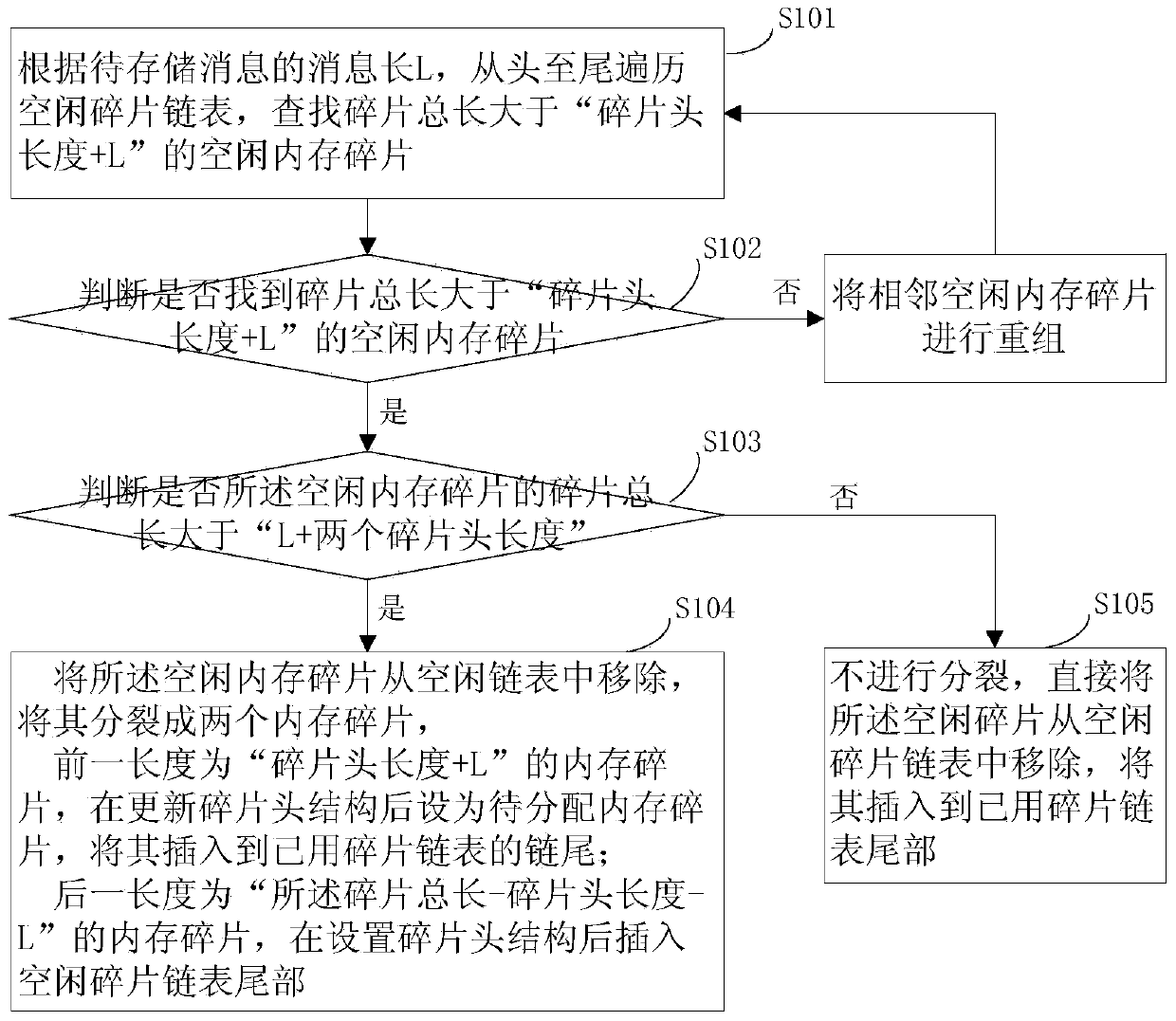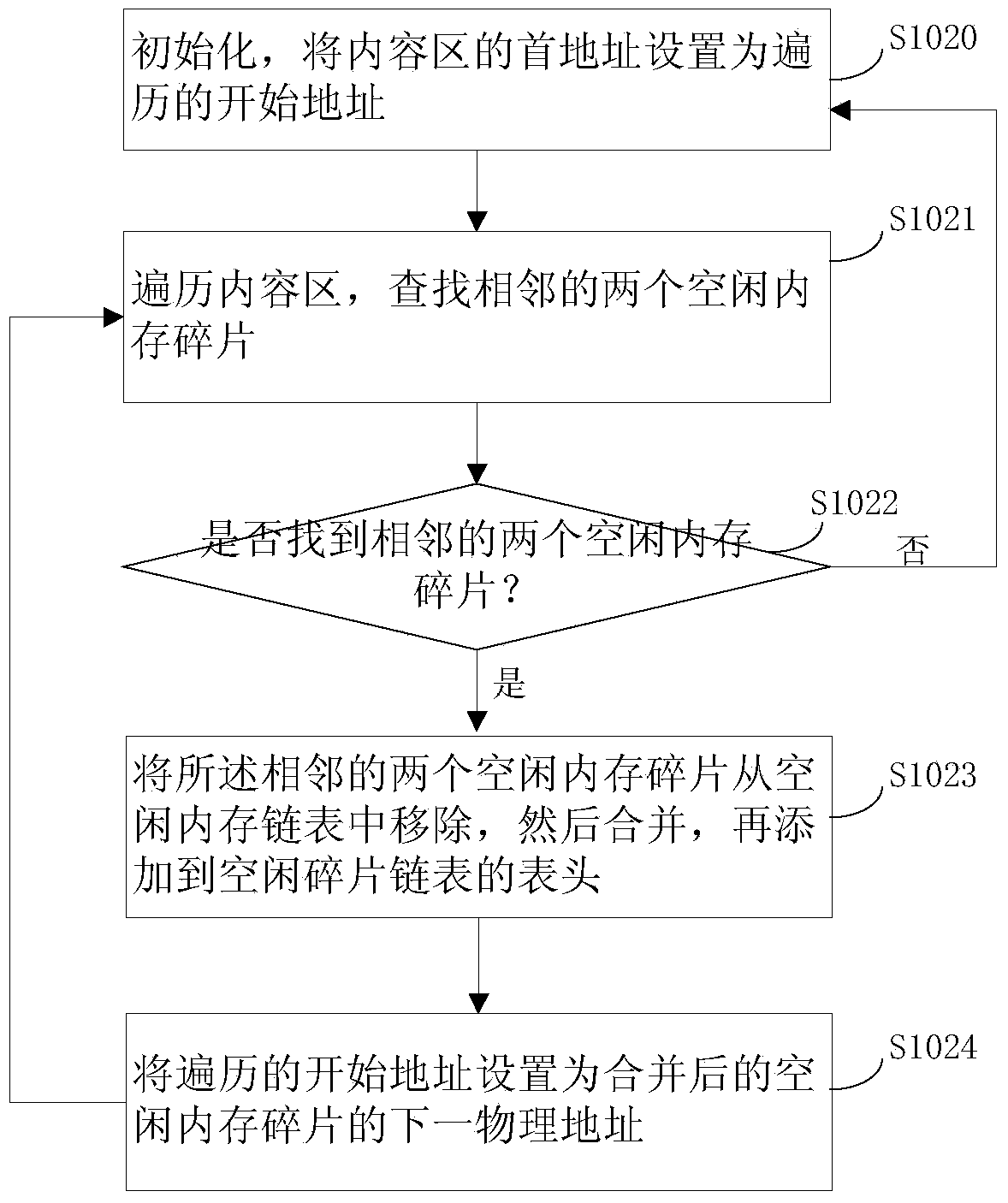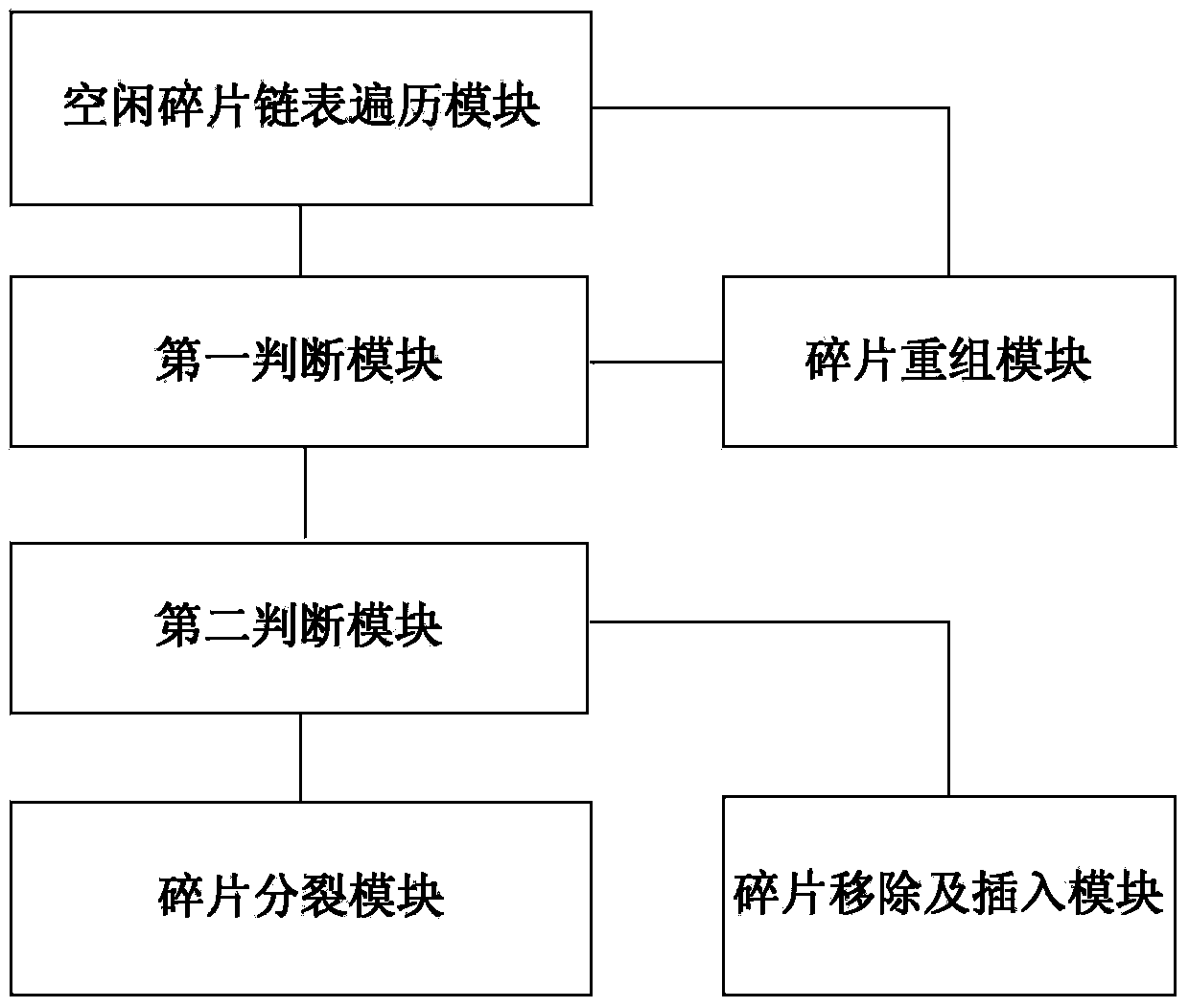Memory fragment allocation method and device based on shared memory
A memory fragmentation and shared memory technology, applied in the direction of memory address/allocation/relocation, etc., can solve problems affecting software system efficiency and consuming system resources, so as to improve system efficiency, increase concurrency, improve horizontal expansion capability and flexibility sexual effect
- Summary
- Abstract
- Description
- Claims
- Application Information
AI Technical Summary
Problems solved by technology
Method used
Image
Examples
Embodiment 1
[0032] figure 1 It is a flowchart of a memory fragment allocation method based on shared memory in a preferred embodiment of the present invention; the method includes the following steps:
[0033] S101, according to the message length L of the message to be stored, traverse the free fragment list from the beginning to the end, and find free memory fragments whose total fragment length is greater than "fragment header length + L";
[0034] Such as figure 2 Shown is a schematic diagram of the memory fragmentation structure of the preferred embodiment of the present invention;
[0035] Memory fragmentation is a certain length of storage space allocated from shared memory for read or write operations;
[0036] Memory fragmentation includes a fragment header and a fragment entity; the fragment header includes 5 fields: the total length of the fragment, the used length, the previous fragment pointer, the next fragment pointer, and the usage status; the fragment entity is the act...
Embodiment 2
[0069] Figure 5 It is a structural diagram of a device for allocating memory fragments based on shared memory in a preferred embodiment of the present invention. The devices include:
[0070] The free fragment linked list traversal module is used to traverse the free fragment linked list from the beginning to the end according to the message length L of the message to be stored, and find free memory fragments whose total fragment length is greater than "fragment header length + L";
[0071] The first judging module is used to judge whether to find free memory fragments whose total fragment length is greater than "fragment header length+L", if so, then enter the second judging module, otherwise, enter the fragment reorganization module,
[0072] The second judging module is used to judge whether the fragment total length of the free memory fragment is greater than "fragment header length+L+ fragment header length" (i.e. "L+ two fragment header lengths"), if so, then enter the...
PUM
 Login to View More
Login to View More Abstract
Description
Claims
Application Information
 Login to View More
Login to View More - R&D
- Intellectual Property
- Life Sciences
- Materials
- Tech Scout
- Unparalleled Data Quality
- Higher Quality Content
- 60% Fewer Hallucinations
Browse by: Latest US Patents, China's latest patents, Technical Efficacy Thesaurus, Application Domain, Technology Topic, Popular Technical Reports.
© 2025 PatSnap. All rights reserved.Legal|Privacy policy|Modern Slavery Act Transparency Statement|Sitemap|About US| Contact US: help@patsnap.com



